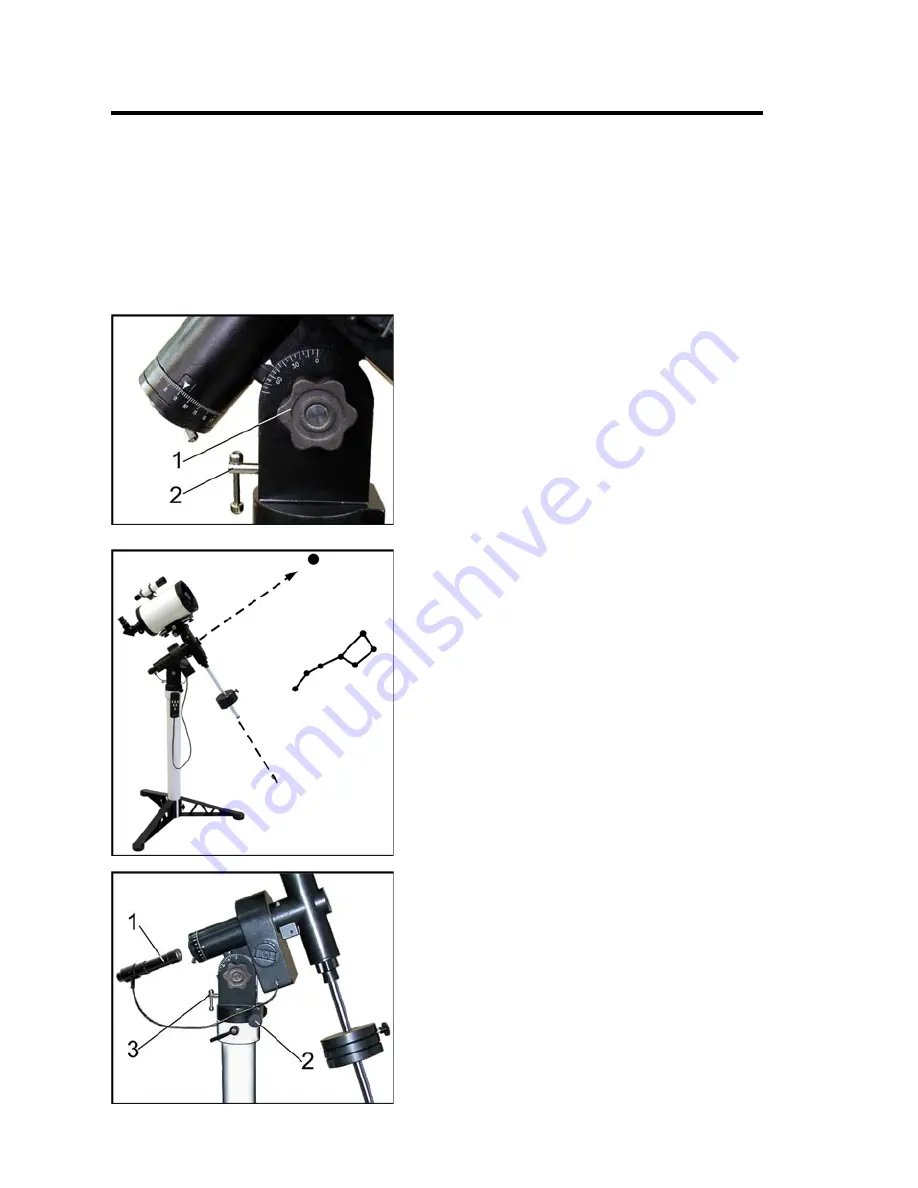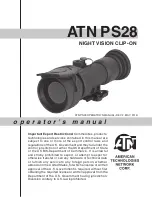
7
Release the latitude lock (1). Using
latitude adjustment knob (2), move
R.A. axis up or down in order to set
the latitude of your location (see
latitude dial).
Re-tighten the latitude lock (1).
For visual observations point the
R.A. (polar) axis of the telescope
towards Polaris (
umi). See the
picture.
With this level of pointing accuracy,
very little use of the Dec. slow-
motion control is necessary for
celestial objects tracking. Less
correction is required, when polar
alignment is done more precisely.
more precise polar alignment is
required for astrophotography.
MT-3S (MT-3S-2D) mount equipped
with a polar axis finder scope (1),
for precise polar alignment, with a
reticle illumination. The reticle also
has major stars of the Ursa Minor
constellation, including Polaris,
depicted for the Northern hemi-
sphere, and stars of the Octans
constellation for the southern
hemisphere.
POlAr AlIGNMENt
Due to the Earth’s rotation, celestial objects move in the telescope
field of view (the higher telescope magnification - the faster those
movements appear).
Polar alignment of the telescope allows more comfortable observations,
because you can follow objects by moving the telescope about one
axis, the polar axis (or right Ascension (r.A.) axis), which is in parallel
with the Earth’s axis.
Polaris
Polar
axis
ursa major
Axis
of
Declinations





































